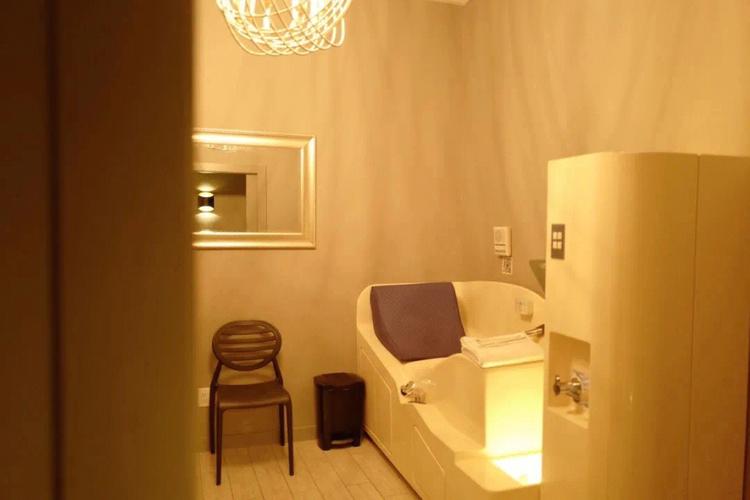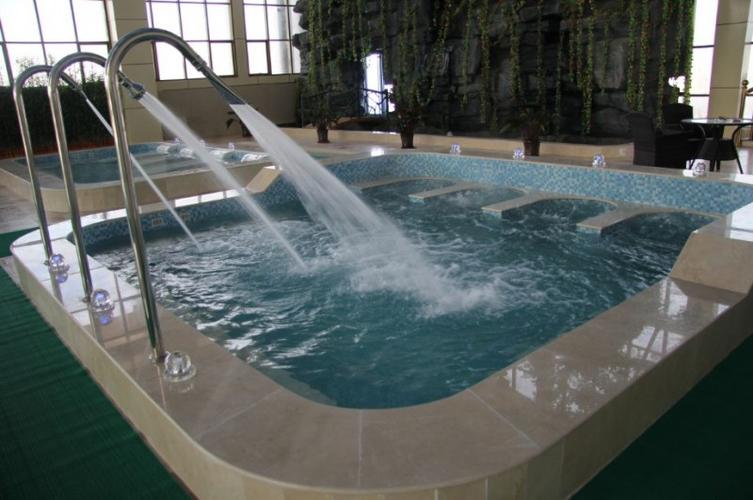- 本文目录导读:
- Understanding Traditional Chinese Massage
- The Benefits of Traditional Chinese Massage
- Practices and Techniques in Chinese Massage
- Integrating Chinese Massage into Your Wellness Routine
- Conclusion
In today's fast-paced world, maintaining health and well-being has become increasingly challenging. The constant pressure from work, social commitments, and personal responsibilities can lead to stress and various physical ailments. As we seek effective ways to rejuvenate our bodies and minds, traditional Chinese massage, also known as Tui Na, emerges as a powerful and holistic approach to wellness. This ancient practice, steeped in history and wisdom, offers numerous benefits that can enhance our quality of life.
Understanding Traditional Chinese Massage
Traditional Chinese massage is an integral part of Traditional Chinese Medicine (TCM), which has been practiced for thousands of years. TCM views the human body as a holistic system where physical, emotional, and spiritual aspects are interconnected. The primary goal of TCM is to balance the body's vital energy, or "Qi," which flows through pathways known as meridians. When Qi is blocked or imbalanced, it can lead to illness and discomfort. Chinese massage aims to unblock and regulate Qi, promoting harmony within the body.
There are various techniques used in Chinese massage, including Tui Na, acupressure, and reflexology. Each technique focuses on specific areas of the body and employs different methods to achieve therapeutic effects. Tui Na, for instance, involves kneading, rolling, pressing, and rubbing the body's muscles and soft tissues. This method is highly effective in treating musculoskeletal issues, reducing stress, and improving circulation.
The Benefits of Traditional Chinese Massage
1. **Pain Relief**: One of the most significant benefits of Chinese massage is its ability to alleviate pain. By targeting specific pressure points and meridians, practitioners can relieve tension and pain in various parts of the body. This is particularly beneficial for individuals suffering from chronic pain conditions such as arthritis, back pain, and migraines.
2. **Stress Reduction**: In our modern lives, stress is an unavoidable companion. Chinese massage helps reduce stress by calming the nervous system and promoting relaxation. The rhythmic movements and pressure applied during the massage stimulate the release of endorphins, the body's natural feel-good hormones, which helps reduce anxiety and improve mood.
3. **Improved Circulation**: Proper blood circulation is essential for maintaining overall health. Chinese massage techniques, such as kneading and rolling, enhance blood flow to various parts of the body. Improved circulation ensures that oxygen and nutrients are efficiently delivered to tissues and organs, promoting faster healing and better overall function.

4. **Enhanced Immunity**: Regular Chinese massage sessions can boost the immune system by stimulating the lymphatic system. The lymphatic system plays a crucial role in removing toxins and waste from the body. By enhancing lymphatic drainage, Chinese massage helps strengthen the body's natural defenses against illness and infection.
5. **Better Sleep**: Insomnia and poor sleep quality are common issues in today's society. Chinese massage can improve sleep by reducing stress and anxiety, relaxing the muscles, and calming the mind. The deep relaxation achieved during a massage session can lead to more restful and rejuvenating sleep.
Practices and Techniques in Chinese Massage
1. **Tui Na (推拿)**: Tui Na, which translates to "push and pull," is the most commonly used form of Chinese massage. It involves a combination of pressing, kneading, rolling, and stretching techniques to manipulate the body's soft tissues. Tui Na is particularly effective in treating musculoskeletal problems, such as neck and back pain, and promoting overall relaxation.
2. **Acupressure (指压)**: Acupressure involves applying pressure to specific points on the body, known as acupoints. These points are located along the meridians and correspond to different organs and bodily functions. By stimulating these acupoints, practitioners can relieve pain, reduce stress, and improve organ function.
3. **Reflexology (反射疗法)**: Reflexology focuses on the feet, hands, and ears, where specific reflex points correspond to different organs and systems in the body. By applying pressure to these reflex points, practitioners can promote healing and balance throughout the body. Reflexology is particularly effective in relieving stress and improving circulation.
4. **Cupping Therapy (拔罐)**: Cupping involves placing cups on the skin to create suction. This technique helps improve blood flow, reduce inflammation, and alleviate pain. Cupping is often used in conjunction with other massage techniques to enhance their therapeutic effects.
Integrating Chinese Massage into Your Wellness Routine
To fully benefit from traditional Chinese massage, it is essential to integrate it into your regular wellness routine. Here are some tips to help you get started:

1. **Find a Qualified Practitioner**: It is crucial to seek a qualified and experienced practitioner who is knowledgeable in traditional Chinese massage techniques. Look for practitioners who have received formal training and certification in TCM and massage therapy.
2. **Consistency is Key**: Like any wellness practice, consistency is essential for achieving the best results. Schedule regular massage sessions to maintain the benefits and address any emerging health issues promptly.
3. **Combine with Other TCM Practices**: Traditional Chinese massage is most effective when combined with other TCM practices, such as acupuncture, herbal medicine, and Qi Gong. These complementary therapies work synergistically to enhance overall health and well-being.
4. **Practice Self-care**: In addition to regular massage sessions, incorporate self-care practices into your daily routine. Simple techniques, such as self-massage, stretching, and mindful breathing, can help maintain the benefits of professional massage and promote overall relaxation.
Conclusion
Traditional Chinese massage is a time-honored practice that offers numerous health benefits. By understanding and integrating this ancient therapy into our lives, we can enhance our physical, emotional, and spiritual well-being. Whether you seek pain relief, stress reduction, improved circulation, or better sleep, Chinese massage provides a holistic approach to achieving optimal health. Embrace this ancient wisdom and experience the transformative power of traditional Chinese massage.
转载请注明:成都会所桑拿-四川成都休闲桑拿推荐论坛! » 武汉夜网 » Revitalizing Health and Well-being Through Traditional Chinese Massage: An In-depth Guide
版权声明
本文仅代表作者观点,不代表成都休闲网立场。
本文系作者授权发表,未经许可,不得转载。

























